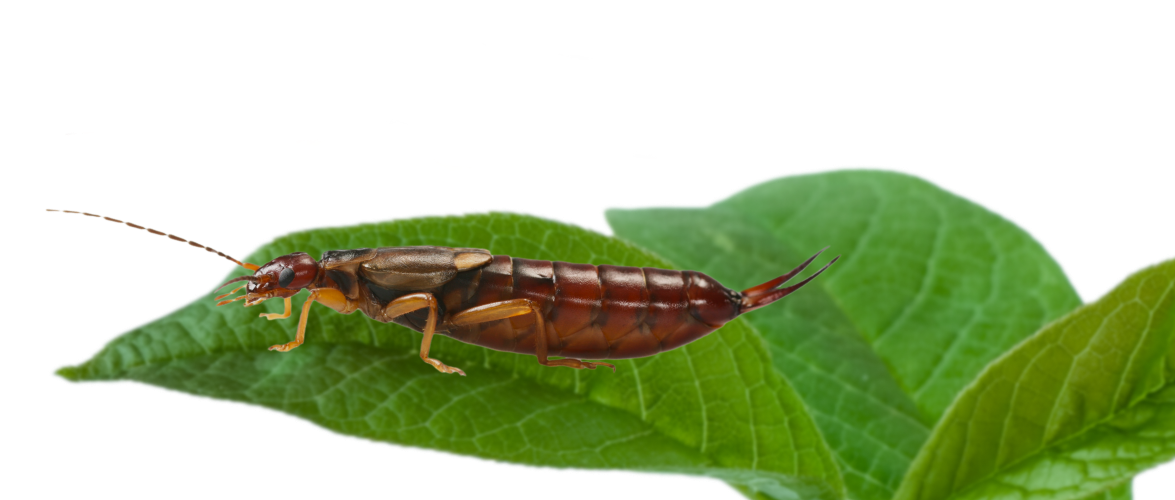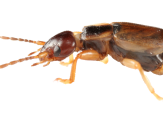Earwig Pest Control Sydney



The scientific family name for an earwig is the insect order Dermaptera, and these tiny insects are believed to have originated in the wooded areas of Europe and Asia.
They are an introduced species of insect commonly found in Sydney, Australia, due to the humid climates and abundant food sources in this region. One reason that earwigs are known for their presence in Sydney is that they feed on a wide variety of dead leaves, flowers, rotten wood, fruits, plants and other plant materials.
Additionally, earwigs possess strong jaws that help them to easily chew through tough plant matter. Overall, these fascinating creatures have played an important role in the ecosystem for many centuries, and continue to be an important part of the natural environment today.
Earwigs are small, insect-like creatures that are typically characterized by their long, flat bodies and prominent pincer-like appendages known as cerci. These body parts make earwigs easy to identify, even from a distance. In terms of size, earwigs typically range from about 7 to 10cm long, although larger or smaller individuals may be encountered as well.
The colour of earwigs can vary widely, ranging from dark brown to black or pale yellow to reddish-orange.
Another way to identify an earwig is by examining its numerous legs. An adult earwig has six legs in total: four slender walking legs at the front of the body and two large cerci at the back. Each leg typically contains seven segments and is covered in tiny hairs that help it navigate through tough terrain or cling to surfaces like walls or ceilings.
Lastly, earwigs can also be distinguished by their distinctive segmented body with hardened plates on their back and softer plates on their underside.
Earwigs are a type of insect that got their name from an old myth about their supposed role in human ears. According to this myth, earwigs would crawl into people's ears at night and tunnel into their brains to lay their eggs there. Of course, this story is completely untrue.
Earwigs are small, insect-like creatures that are known for the long, curved pincers on their behinds. These specialized structures, called cerci, act as highly sensitive sensors that allow these pincher bugs to detect changes in their environment and interact with their surroundings in a variety of ways.
One of the most important functions of the earwig's sensory system is its ability to help them navigate and evade prey. Using specialized sensory bristles along their bodies, earwigs can sense changes in air movement, temperature, and chemical composition. This enables them to quickly identify and respond to potential predators or obstacles in their path.
Furthermore, their auditory abilities allow them to process and distinguish between different sounds, helping them detect potential food sources or mates through vibration alone.
While all of these sensing capabilities certainly provide valuable benefits for the earwig, perhaps the most important one is their olfactory system. Through a combination of chemoreceptors on their antennae and mouth parts, earwigs can identify specific odours and use these scents to locate food sources or mates from far distances.
As a result, having a powerful sensory system is essential for an earwig's survival in its complex and unforgiving ecosystem.
The Life cycle of an Earwig is a type of metamorphosis known as gradual development. This means that the different stages of the earwigs' life are not separated by distinct periods of growth but rather occur gradually and seamlessly through multiple moults.
The first step in the cycle is egg laying (up to 60 eggs a day), which occurs when adult female earwigs burrow into the ground to find a suitable location for their eggs. This takes place over several different stages, including scouting for a good spot, digging through the soil, and creating an underground chamber where the eggs will be laid. Once they have selected a suitable spot and begun laying their eggs, adult earwigs typically guard their nests until the eggs hatch.
During this time, the eggs undergo several different stages of development before finally hatching into small nymphs. These nymphs then begin to grow and mature over several weeks or months as they move through various developmental stages called instars. During this time, they will feed on plant matter similar to adults to gain strength and size. Eventually, they shed their outer skin one final time to become adult earwigs. The entire life cycle of an earwig usually takes anywhere from 8 to 12 months.
Despite their relatively short lifespan of just a few years on average, an earwig population can become out of control, contact us now!
One key behaviour of earwigs is their dietary habits. Earwigs are omnivorous creatures and will eat just about anything they can find, including seeds, fruits, vegetation, and other small organisms such as insects or worms.
Another common behaviour among earwigs is their tendency to hide during the daytime hours. Whether they are seeking shelter underneath rocks or large pieces of wood or simply seeking cover in long grass or shrubs, these nocturnal bugs prefer not to be seen by humans whenever possible. Earwigs prefer darkness to bright light.
Finally, an important behaviour of earwigs is their propensity for mating. Earwigs tend to remain together as pairs for the duration of their adult lives and generally only separate when it comes time to search for a new mate.
Earwigs are attracted to two main things: moisture and food. They generally prefer damp environments that are rich in decaying organic matter and other sources of nutrients.
In addition to seeking out these ideal conditions, earwigs eat a wide range of different foods and plant material, including vegetable matter like strawberries and leafy green vegetables as well as insects like grubs, caterpillars, and various types of larvae.
They are highly adaptable predators, earwigs can thrive in a variety of different damp areas, making them one of the most ubiquitous species on the planet. Ultimately, the survival of earwigs is tied closely to their ability to detect and take advantage of key resources like moisture and food. Call us now to prevent earwigs!
Earwigs are small, insect-like creatures that are often found in and around homes. While their presence can sometimes be alarming, there are a few possible reasons why earwigs might show up in your home. For one thing, they may have been brought indoors accidentally on flowers or other organic material. Alternatively, they could be seeking out a place where they can find food such as rotting fruit or small insects. Additionally, earwigs may simply be migrating to a new area, either expanding their territory or looking for better weather conditions and a more comfortable climate.
Whatever the reason, it's important to take steps to control and get rid of earwigs if you want to maintain a pest-free environment in your home.
At E1 Pest Solutions, we understand that having an earwig infestation can be a real nuisance. These pests are not only incredibly irritating, but they can also cause significant damage to your garden and property. Luckily, our team of highly-trained specialists has the knowledge and experience needed to effectively handle any earwig infestation quickly and efficiently to prevent further earwig damage. Our custom-built treatment plans are designed specifically for your unique needs, and we will work tirelessly until the infestation has been eradicated. So if you're looking for a reliable pest control service that you can trust with your home or commercial property, look no further than E1 Pest Solutions. We guarantee your satisfaction 100%!
We'll be happy to answer any of your questions and help you find the best solution for your team today. Thank you for choosing E1 Pest Control Services!